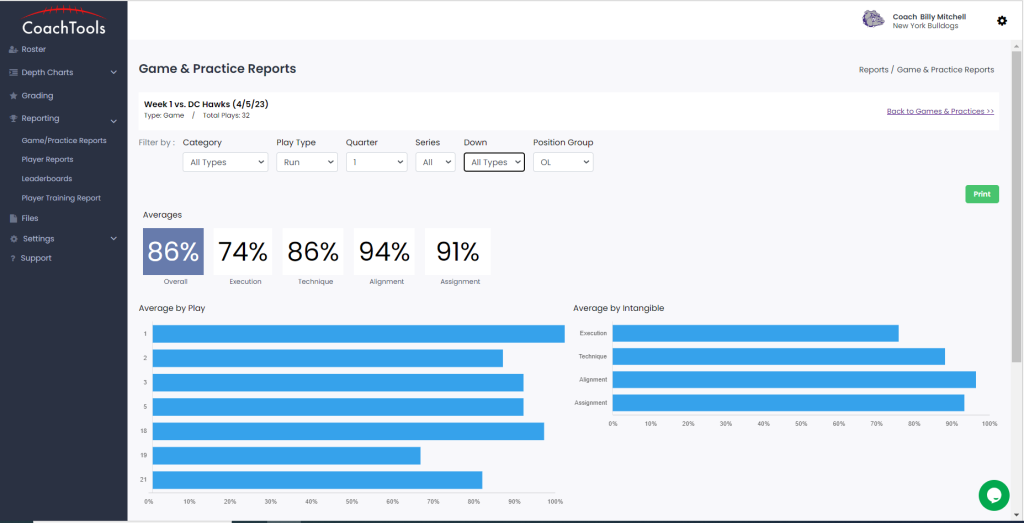From Pen and Paper to Modern Coaching: The Pitfalls of Old Player Grading Methods

In the fast-paced world of modern sports, coaches are continually seeking ways to enhance player performance and elevate their teams to new heights. However, traditional methods of player grading, such as using pen and paper, can pose significant challenges in achieving these goals. In this blog post, we will explore the problems that coaches face when using antiquated grading methods and highlight the importance of embracing digital solutions for optimized workflow and improved coaching outcomes.
Time-Consuming Data Collection
One of the most evident issues with pen and paper grading is the amount of time coaches invest in manually recording player performance data. This tedious process diverts valuable coaching time away from essential tasks like strategizing and player development. As a result, coaches find themselves overwhelmed and unable to dedicate adequate attention to actually coaching players.
Limited Data Organization
Using pen and paper may lead to disorganized and scattered data, making it challenging for coaches to access and analyze player performance trends. Without a well-structured data management system, coaches struggle to identify patterns and capitalize on players’ strengths while addressing their weaknesses. This lack of organization can hinder the team’s growth and performance in the long run.

Inadequate Real-Time Insights
In the dynamic world of sports, real-time insights are paramount to making swift, informed decisions during games and practice sessions. However, traditional grading methods lack the ability to provide immediate performance feedback, hindering coaches from making timely adjustments and optimizing player performance.
Reduced Accuracy and Objectivity
Subjective evaluation and human biases are inherent risks in manual grading, leading to inconsistent and potentially unfair assessments of players. Coaches may unintentionally favor certain players or overlook critical aspects due to these biases, impacting both individual development and team dynamics.
Limited Analytical Capabilities
Pen and paper grading fall short in providing coaches with advanced analytical features available in digital grading systems. This limitation restricts coaches from conducting in-depth performance analysis, hindering their ability to identify players’ potential and tailor training programs accordingly.

Inefficient Communication and Collaboration
Sharing player grading data and insights with fellow coaches or team members becomes cumbersome with physical records. The lack of efficient communication and collaboration can result in missed opportunities for collective strategizing, sharing best practices, and fostering team cohesion.
Conclusion
As the world of sports continues to evolve and demand higher levels of performance, coaches must adapt their methods to keep up with the pace. The problems presented by old and antiquated player grading methods, like using pen and paper, can no longer be ignored. Embracing digital grading solutions offers a viable solution to optimize workflow and address these challenges effectively.
By leveraging technology, coaches can streamline data collection, access real-time insights, and conduct advanced performance analysis. This optimization enables coaches to spend more time focusing on critical tasks, such as training, strategizing, and developing their players’ skills.
Ultimately, embracing the digital age of player grading empowers coaches to enhance player performance, maximize team potential, and achieve unparalleled success on and off the field. It’s time to bid farewell to the limitations of old grading methods and unlock the full potential of coaching in the 21st century!
